Are you a Quiet Speculation member?
If not, now is a perfect time to join up! Our powerful tools, breaking-news analysis, and exclusive Discord channel will make sure you stay up to date and ahead of the curve.
Experienced Magic players stress the importance of testing matchups sideboarded—after all, more than half of all games in a given tournament are played sideboarded. So too must I stress the importance of mastering the main phases, of which there are two per turn!
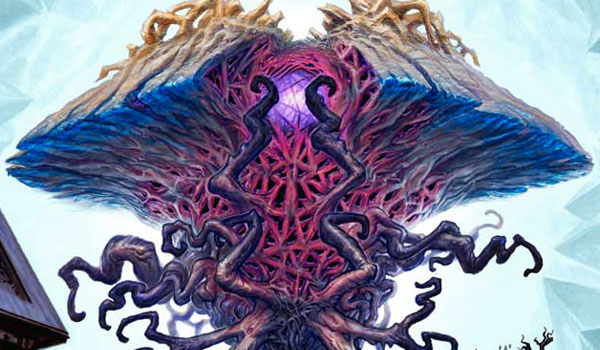
Just a Phase focuses on the nuances of priority and phase manipulation in Modern. The first episode dealt with the upkeep and draw phases, and the second with combat. This final chapter explores a turn's two main phases and ending phase.
My Main Man
Unique among phases, the main phase is repeated once each turn, yielding a precombat and a postcombat main phase (hereafter respectively referred to as "main 1" and "main 2"). These phases are identical other than their placement on a turn's timeline.
Acting in Main 2
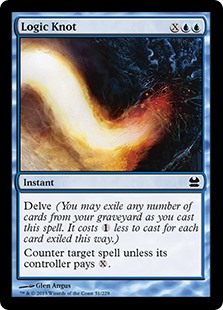 New Magic players habitually draw before untapping their lands, and similarly play out their fresh cards at the first opportunity. They quickly learn that doing so thoughtlessly is "wrong," and fall into a second trap: always acting in main 2. Many players stay victims of this mentality past the FNM stage of their Magic careers and a little into their paid Competitive REL-event stage.
New Magic players habitually draw before untapping their lands, and similarly play out their fresh cards at the first opportunity. They quickly learn that doing so thoughtlessly is "wrong," and fall into a second trap: always acting in main 2. Many players stay victims of this mentality past the FNM stage of their Magic careers and a little into their paid Competitive REL-event stage.
To be fair, acting in main 2 is frequently correct; of course, doing so thoughtlessly is usually not. Reasons players may want to act in main 2 are to empty an opponent's mana pool before making a play, and, more commonly, to withhold information during combat.
Drawing and immediately attacking forces opponents to choose how to navigate combat without knowing what's in store for them later. Do they zap a creature, or continue holding up Logic Knot? Do they block and trade, or take the hit and attack back next turn? Had the turn player played a land and tapped out for a new spell in main 1, these decisions would prove much easier.
Acting in Main 1
There are three reasons for the turn player to act at sorcery speed before combat: to widen their options during combat, to gain information, and to bait out responses.
Widening options is as simple as playing a land for the turn. Naturally, tapped lands should never be played for this reason; that information, which provides no benefit for giving up, is best kept hidden until later. But basic and fetchlands, as well as shocks that would enter untapped that turn cycle regardless, can be deployed immediately. Even if playing a land first makes no tangible difference for the turn player (i.e. their only play is to cast a creature in main 2), doing so signals more possible options to opponents.
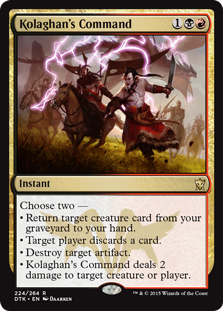 Take, for instance, the Jund vs. Infect matchup. On turn three, Jund may want to swing with Tarmogoyf and then use Liliana of the Veil to remove a Glistener Elf. Jund's third land should be played before attacks. What if Elf blocks and is supplemented with a pump spell? Jund can respond to Mutagenic Growth with the likes of Kolaghan's Command, rather than the other way around. Whether or not Jund has access to Command, playing out the land first presents that option and complicates enemy lines.
Take, for instance, the Jund vs. Infect matchup. On turn three, Jund may want to swing with Tarmogoyf and then use Liliana of the Veil to remove a Glistener Elf. Jund's third land should be played before attacks. What if Elf blocks and is supplemented with a pump spell? Jund can respond to Mutagenic Growth with the likes of Kolaghan's Command, rather than the other way around. Whether or not Jund has access to Command, playing out the land first presents that option and complicates enemy lines.
As always, there are exceptions to this rule, too; waiting with a land when there's nothing worth representing during combat is a way to bluff an additional play post-combat, which occasionally misleads opponents into disrupting sub-optimally. It's up to players to weigh the value of representing more options now versus representing more action in the grip.
Another reason to act in main 1 is gaining information, which leads to better attacks. Targeted discard like Thoughtseize and Thought-Knot Seer are the most obvious example of such spells, but being a creature, Seer is still mistakenly relegated to main 2 an uncomfortable amount of the time—even with opponents tapped out! There are other ways of generating information, too, like cantripping or casting spells into potential disruption.
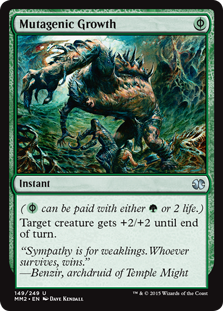 The latter situation leads us to the final reason to act in main 1: baiting out responses. If it's holding three Mutagenic Growths, Counter-Cat might willfully slam Tarmogoyf into an opposing Logic Knot pre-combat to tap them out before dealing lethal out of seemingly nowhere. Baiting doesn't have to be game-ending, either; it's generally as simple as sequencing threats in order of least to most valuable. And sometimes, it's as subtle as, yes, attacking first. Whether it's ideal to deploy spells in main 1 or 2 depends heavily on the context and is best learned with reps.
The latter situation leads us to the final reason to act in main 1: baiting out responses. If it's holding three Mutagenic Growths, Counter-Cat might willfully slam Tarmogoyf into an opposing Logic Knot pre-combat to tap them out before dealing lethal out of seemingly nowhere. Baiting doesn't have to be game-ending, either; it's generally as simple as sequencing threats in order of least to most valuable. And sometimes, it's as subtle as, yes, attacking first. Whether it's ideal to deploy spells in main 1 or 2 depends heavily on the context and is best learned with reps.
Living at the Finish Line
The ending phase consists of two smaller steps: the end step and the cleanup step. The former has no turn-based actions, but remains one of the most popular times to act during an opponent's turn. Cleanup is a functional opposite, featuring turn-based actions but preventing deliberate ones from players unless certain conditions are met.
Acting in End Step
End step actions primarily serve to deny opponents options. The turn player cannot cast sorcery-speed spells once they've proceeded to the end step, so waiting until this step to act limits the possible plays opponents can make. It's not rare to take damage from an attacker and then kill it in end step to dissuade opponents from adding more to the board—by the end step, opponents have lost that option.
These actions also relate to information gathering. Critically, the end step represents the last time players receive priority, and the non-turn player is the last of the pair to do so. In other words, that player gets to work with full information about an opponent's plans for the turn: if they pass with seven or fewer cards, they have committed to stop making proactive plays that turn (barring instant-speed ones like Snapcaster Mage, which can then only be made in response to the defending player's action, if any).
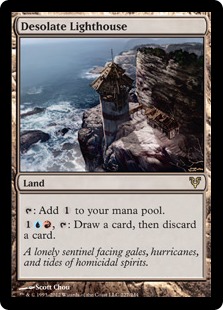 Finally, as the last time a player receives priority, the end step is an ideal time to activate spells or abilities that want to be activated during the turn cycle but cost mana or other resources. Waiting until now keeps more options open with that mana, but barring holding up a critical counterspell for instance, players are highly incentivized to activate something like Desolate Lighthouse here. Creature decks may also want to hold off on acting to complicate opposing removal; if opponents decide to kill off some threats, that may give the creature deck an opportunity to resolve something like Collected Company.
Finally, as the last time a player receives priority, the end step is an ideal time to activate spells or abilities that want to be activated during the turn cycle but cost mana or other resources. Waiting until now keeps more options open with that mana, but barring holding up a critical counterspell for instance, players are highly incentivized to activate something like Desolate Lighthouse here. Creature decks may also want to hold off on acting to complicate opposing removal; if opponents decide to kill off some threats, that may give the creature deck an opportunity to resolve something like Collected Company.
There's nary a reason to ever act on one's own end step. The most common reason for doing so is to react to new information gained, especially from opponents doing something in that step. Opponents usually have less mana after making a play on the turn player's end step, giving that player a safer window to execute a play.
Combing through Cleanup
The cleanup step features two turn-based actions: first, the turn player discards to hand size; then, damage is washed off all permanents, and "until end of turn" and "this turn" effects end. It doesn't naturally give players priority. That said, players do receive a round of priority if an ability is triggered by those turn-based actions, in which case the cleanup step is then repeated.
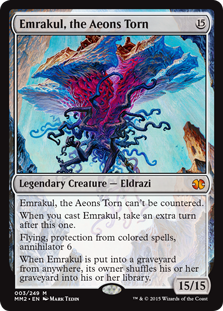 Plenty of theoretical Modern interactions can trigger abilities during cleanup—Kiki-Jiki, Mirror Breaker's token dying with A-Blood Artist on the board, for instance. But such interactions don't occur often in the format. Perhaps the most common is when blue decks discard to hand size by binning Emrakul, the Aeons Torn, which triggers the Eldrazi's shuffle ability.
Plenty of theoretical Modern interactions can trigger abilities during cleanup—Kiki-Jiki, Mirror Breaker's token dying with A-Blood Artist on the board, for instance. But such interactions don't occur often in the format. Perhaps the most common is when blue decks discard to hand size by binning Emrakul, the Aeons Torn, which triggers the Eldrazi's shuffle ability.
In that and similar scenarios, players receive priority only when the triggered ability goes onto the stack, which is after cleanup's other turn-based action is completed. The most interesting change here is the end of "until end of turn" and "this turn" effects—A-Buy Your Silence and related effects stop working here, while hexproof and stat boosts as from Vines of Vastwood fall off. In the latter example, protected infectors can again be interacted with before opponents untap their lands.
I have known many Modern players to misunderstand this step because of its nicheness. Acting in cleanup indeed comes up infrequently, but still sometimes presents a path to victory.
Phasing Out
Thus concludes Just a Phase. Did I miss any key uses for the main phases or the ending phase in Modern? Do you have any phase-related anecdotes to share? Would you like to see more content in the same vein as this article series? Let me know in the comments, and remember not to commit the Cardinal Sin of Phasing—treating it as though it doesn't exist!




Hello Jordan, thank you for another great article!
I have a few questions all about the end step/clean-up, to make sure I understand this correctly.
-You said that that both AP and NAP get priority in the clean-up step if there is a triggered ability. The example you give is Kiki-jiki token dying, but doesn’t this one die at the beginning of the end step, not the clean-up?
-If somehow there is a trigger in the clean-up (Dead weight on a 1/1, that has received +2/+2 until the end of turn, triggers an ability) both players receive priority once more.
Does that really mean that by this time all ”until the end of turn” effects are gone? So Silence would no longer prevent a player from casting spells and stuff like Vines of Vastwood will no longer protect their creatures from interaction?
Interesting to see if I ever will be able to make use of this, but at least it’s in the back of my head!
Yep, I guess Kiki-Jiki doesn’t work. My bad for misreading the card. You understand correctly about the Silence scenario. Back of my head too, operative word being “back” — right now, the interaction is quite niche!